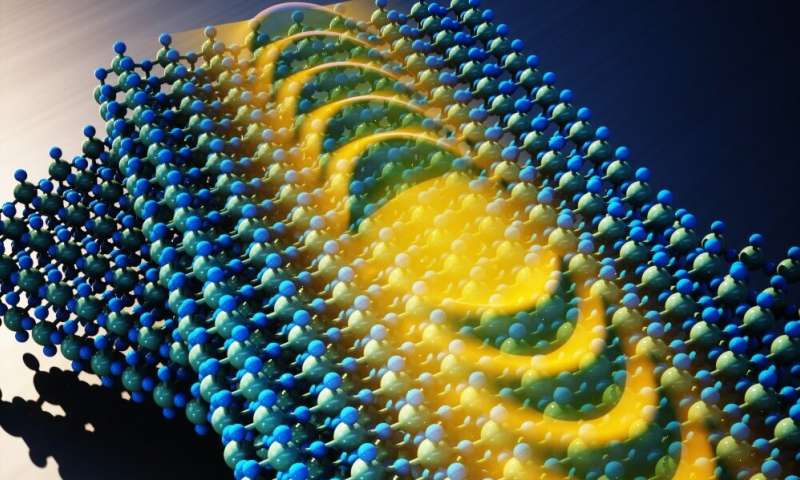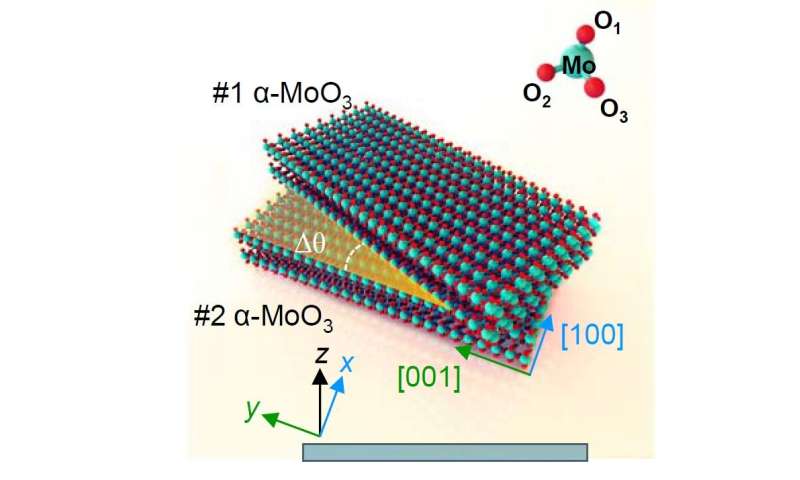#Scientists apply ‘twistronics’ to light propagation and make a breakthrough discovery
“#Scientists apply ‘twistronics’ to light propagation and make a breakthrough discovery”

A research team led by scientists at the Advanced Science Research Center at The Graduate Center, CUNY (CUNY ASRC), in collaboration with National University of Singapore, University of Texas at Austin and Monash University, has employed “twistronics” concepts (the science of layering and twisting two-dimensional materials to control their electrical properties) to manipulate the flow of light in extreme ways. The findings, published in the journal Nature, hold the promise for leapfrog advances in a variety of light-driven technologies, including nano-imaging devices; high-speed, low-energy optical computers; and biosensors.
The team took inspiration from the recent discovery of superconductivity in a pair of stacked graphene layers that were rotated to the “magic twist angle” of 1.1 degrees. In this configuration, electrons flow with no resistance. Separately, each graphene layer shows no special electrical properties. The discovery has shown how the careful control of rotational symmetries can unveil unexpected material responses.
The research team discovered that an analogous principle can be applied to manipulate light in highly unusual ways. At a specific rotation angle between two ultrathin layers of molybdenum trioxide, the researchers were able to prevent optical diffraction and enable robust light propagation in a tightly focused beam at desired wavelengths.
Typically, light radiated from a small emitter placed over a flat surface expands away in circles very much like the waves excited by a stone that falls into a pond. In their experiments, the researchers stacked two thin sheets of molybdenum trioxide—a material typically used in chemical processes—and rotated one of the layers with respect to the other. When the materials were excited by a tiny optical emitter, they observed widely controllable light emission over the surface as the rotation angle was varied. In particular, they showed that at the photonic magical twist angle the configured bilayer supports robust, diffraction-free light propagation in tightly focused channel beams over a wide range of wavelengths.

“While photons—the quanta of light—have very different physical properties than electrons, we have been intrigued by the emerging discovery of twistronics, and have been wondering if twisted two-dimensional materials may also provide unusual transport properties for light, to benefit photon-based technologies,” said Andrea Alù, founding director of the CUNY ASRC’s Photonics Initiative and Einstein Professor of Physics at The Graduate Center. “To unveil this phenomenon, we used thin layers of molybdenum trioxide. By stacking two of such layers on top of each other and controlling their relative rotation, we have observed dramatic control of the light guiding properties. At the photonic magic angle, light does not diffract, and it propagates very confined along straight lines. This is an ideal feature for nanoscience and photonic technologies.”
“Our discovery was based on quite a specific material and wavelength range, but with advanced nanofabrication we can pattern many other material platforms to replicate these unusual optical features over a wide range of light wavelengths,” said National University of Singapore (NUS) graduate student Guangwei Hu, who is first author of the study and a long-term visiting researcher with Alù’s group. “Our study shows that twistronics for photons can open truly exciting opportunities for light-based technologies, and we are excited to continue exploring these opportunities,” said Prof. C.W. Qiu, Mr. Hu’s co-advisor at NUS.
More information:
Topological polaritons and photonic magic angles in twisted α-MoO3 bilayers, Nature (2020). DOI: 10.1038/s41586-020-2359-9 , www.nature.com/articles/s41586-020-2359-9
Scientists apply ‘twistronics’ to light propagation and make a breakthrough discovery (2020, June 11)
retrieved 11 June 2020
from https://phys.org/news/2020-06-scientists-twistronics-propagation-breakthrough-discovery.html
This document is subject to copyright. Apart from any fair dealing for the purpose of private study or research, no
part may be reproduced without the written permission. The content is provided for information purposes only.
If you want to read more Like this articles, you can visit our Science category.
if you want to watch Movies or Tv Shows go to Dizi.BuradaBiliyorum.Com for forums sites go to Forum.BuradaBiliyorum.Com


